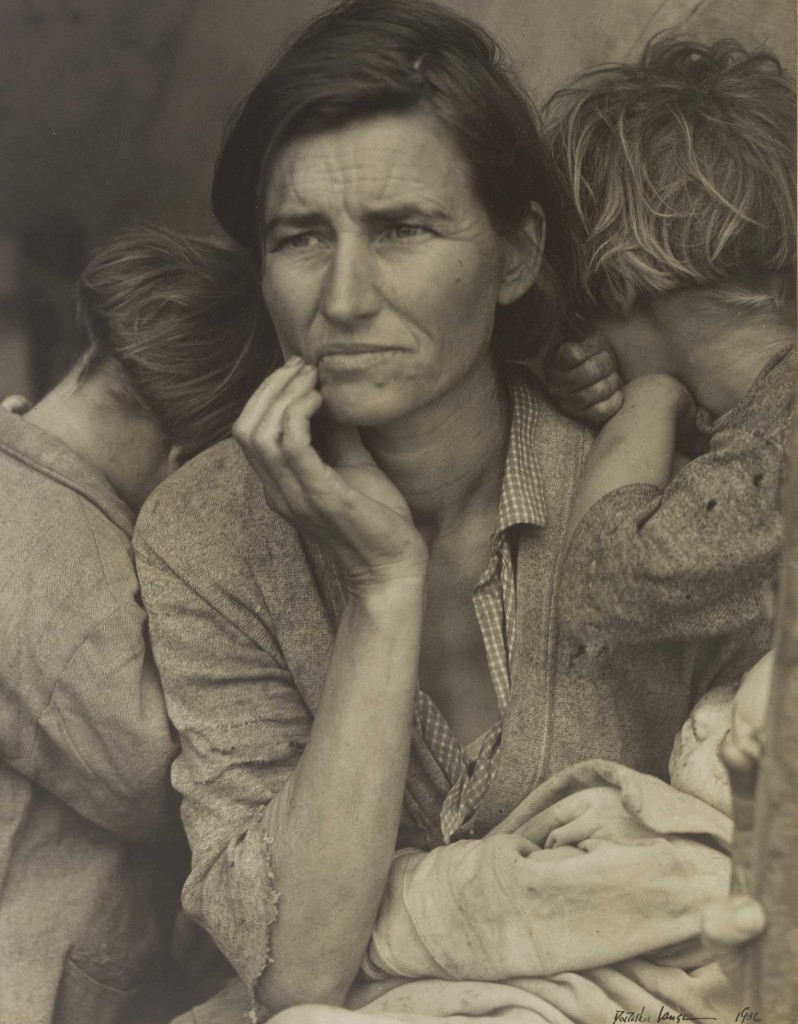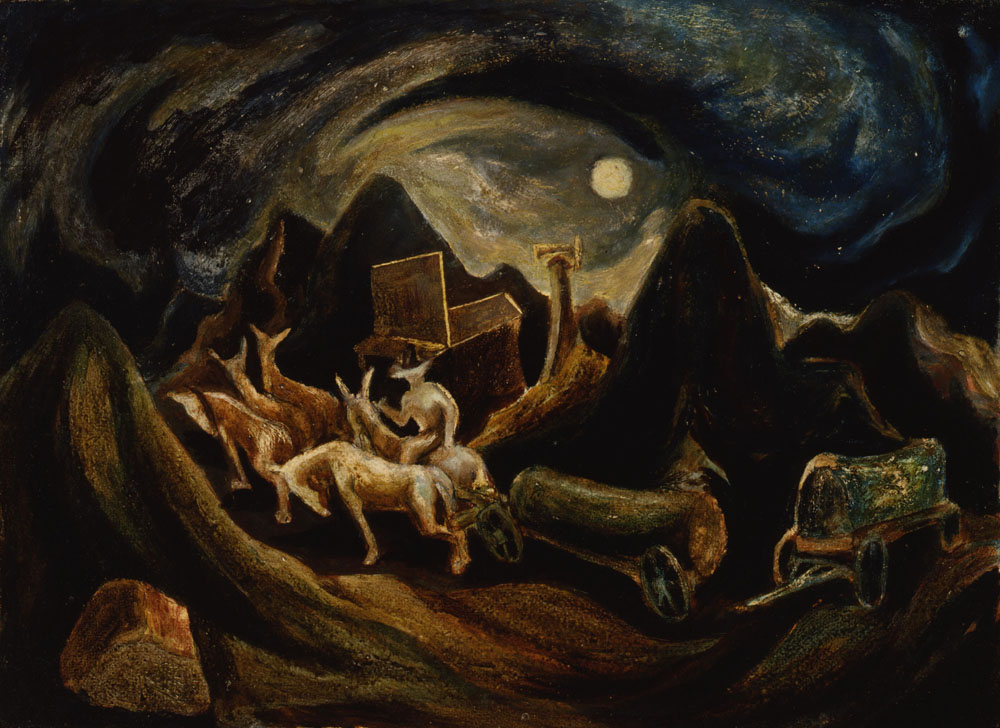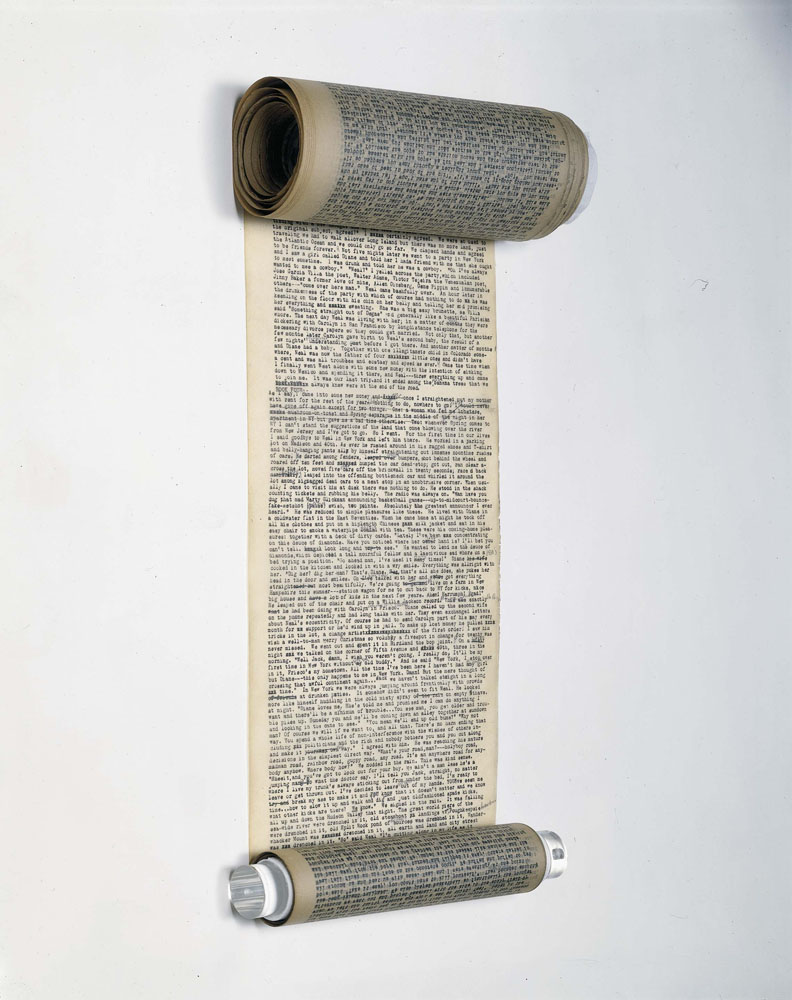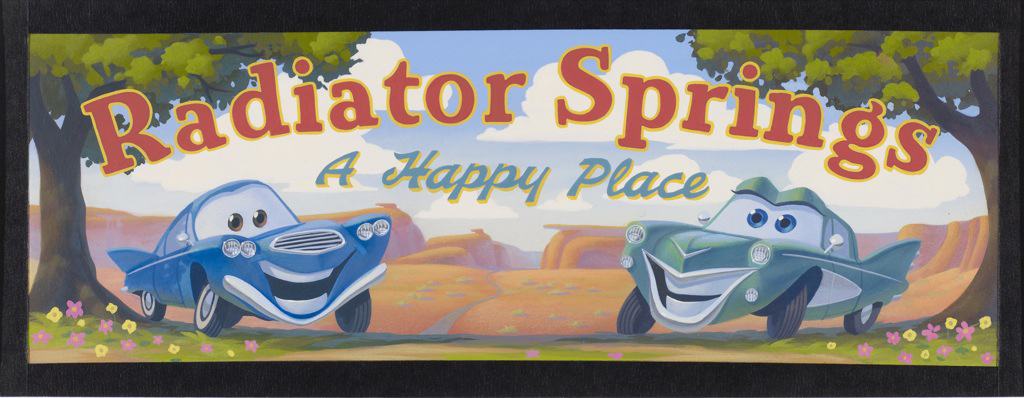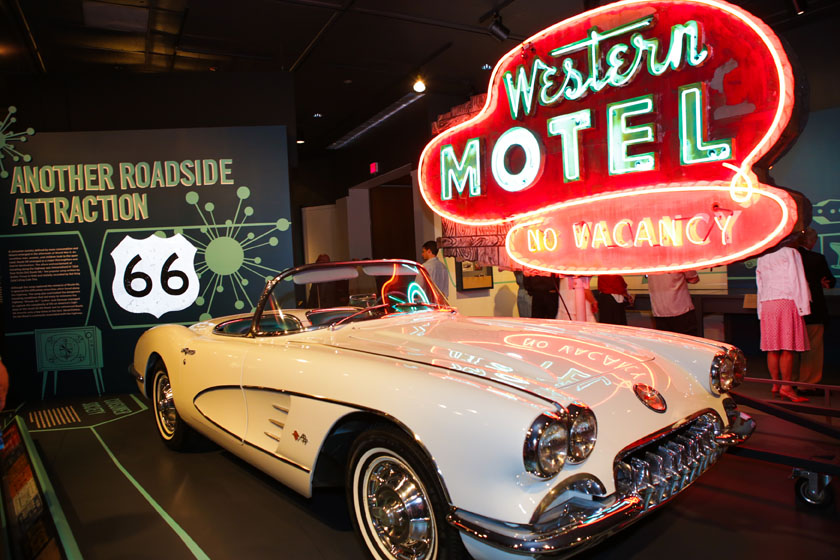 What exactly is Route 66, you might be wondering. Sure, you’re heard about it — most notably in the song, (Get Your Kicks on) Route 66 by Bobby Troupe, which was covered by countless artists from Nat King Cole to Chuck Berry, John Mayer and Glen Frey. And, perhaps you’ve seen a few brave route markers poking up on otherwise busy boulevards in LA.
What exactly is Route 66, you might be wondering. Sure, you’re heard about it — most notably in the song, (Get Your Kicks on) Route 66 by Bobby Troupe, which was covered by countless artists from Nat King Cole to Chuck Berry, John Mayer and Glen Frey. And, perhaps you’ve seen a few brave route markers poking up on otherwise busy boulevards in LA.
But, where does that magical notion of the Mother Road come from? To understand, you have to harken back to the time when traveling West was just a mythical notion. Which is just what that Autry’s new show, Route 66: The Road and the Romance, accomplishes. We visited last week and enjoyed every twist and turn of the story.
It turns out, the story behind Route 66’s iconic status has been literally left in the dust of the federal highway system. Grandparents will tell you that they had to change tires several times on any road trip less than 75 years ago, yet today we spend our lives in the car and never take time to reflect that the pace of change has been remarkable and that the West as we know it is a relatively young place.
What began with buggies and bicycles, grew into the roads around which our Western towns grew up. The oil book in Texas, the Great Depression, and the development of both Disneyland and Las Vegas are all part of the story. In many ways, this is THE Los Angeles story… Between 1900 and 1930, the number of cars in this country grew from 4000 to 27 million. And, as transportation sped up, it multiplied in volume and sophistication, and Americans slowly trod West. Those that didn’t move were tempted by the image of the West, all of which amped up as airplanes could bring tourists to California and Las Vegas quicker than they could travel along Route 66. The West developed mile-by-mile, city-by-city until the point when Eisenhower’s Federal Aid Highway Act connected every city in the nation by a highway system – the President was actually inspired by Germany’s Autoban, we learned. Yet, these highways actually put the nail in the coffin of the fabled Route 66.
Connecting Chicago to Los Angeles, the 2,400-mile-long highway was a witness to history and a symbol for America on the move and the new show explores the experiences and ideas around Route 66 — the real and the imagined, the historic and the contemporary – moving from the reality of how the push west spread industry and technology, how this westward expansion impacted America’s economy, inspired a steady surge of roadside iconography and exploded popular culture, and finally the demise of Route 66 and the dominance of the superhighway.
Route 66: The Road and Romance presents over 250 whimsical and historic artifacts to tell it’s story. Notable examples include the oldest existing Route 66 shield, an incredible early Jackson Pollock landscape painting (from the time he was a student of Thomas Hart Benton), a Ford Model T engine, a ten-foot twin visible gas pump, the handwritten page from The Grapes of Wrath manuscript that introduces the “Mother Road,” John Ford’s Best Director Oscar for the film version of The Grapes of Wrath, renowned Dust Bowl–era photographs, Woody Guthrie’s guitar, and — incredibly — the original typewritten scroll of Jack Kerouac’s On the Road.
We were impressed with the literary and cinematic connections to the story of Route 66, for an important reservoir of American art sprouted during this period and left an indelible mark on the American consciousness. If you’re willing to do some pre-exhibit homework — taking the time to read John Steinbeck’s Grapes of Wrath, or watch John Ford’s adaptation (starring Henry Fonda as Tom Joad), and/or watching Pixar’s Cars before (or after) — your family will garner an even deeper appreciation of the history laid out in this exhibit.
American art was likewise affected by the myth of the road. The show opens with an early Jackson Pollock, very much influenced by his mentor Thomas Hart Benton. A few of Benton’s rollicking paintings are also included in the show, and show the intersection of the oil drilling and the westward stretching roads and the beautiful landscape of the West. The Great Depression also sent artists to the streets, and Dorothea Lange’s stirringly beautiful Migrant Mother is a highlight of the show.
The show contains several artifacts from the Pixar film Cars, which is cited as one of the inspirations for reviving
There is something for everyone in the show – with fun items from across the cultural spectrum, which always offers adults a chance to share their memories and stories with kids. Bring the grandparents, for maximum reach into the fabled past of this wonderful American icon.
During the run of the exhibition, the Autry will celebrate the “Mother Road” through seminars, tours, family activities, films, and more. Highlights include Route 66 Lost and Found, an afternoon with photographer Russell Olsen presenting his multivolume book comparing contemporary photos of Route 66 with postcard images from the road’s heyday (July 20); a Neon Cruise of Downtown L.A., an open-top bus tour hosted by the Museum of Neon Art (August 21); a theatrical production Waiting for Jack with prominent L.A. poets reading the works of Beat poets in a loose reenactment of the historic 1955 Six Gallery poetry reading (September 11); and a screening of the documentary American Road, which delves into the artistic, musical, and literary resonances of the mystique of the road in American lore (November 13). On select mornings, visitors can see classic mid-century cars outside the museum and sip coffee with car enthusiasts through a series called Morning Joe and the Mother Road (exact dates TBA). Other family-friendly activities include a Route 66 Lego® Day with an afternoon screening of the Pixar animated feature Cars (September 14).
Click here for links to related programming.

